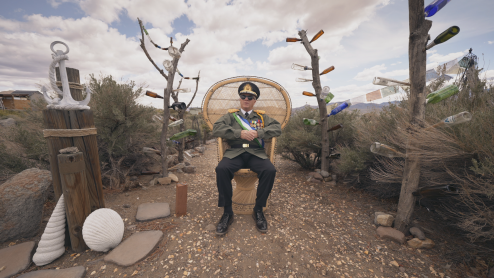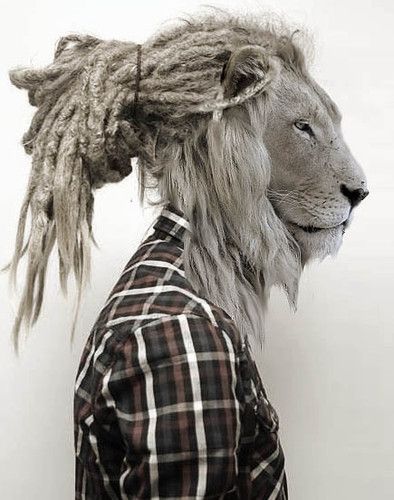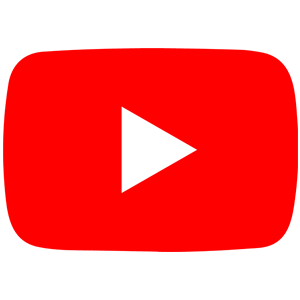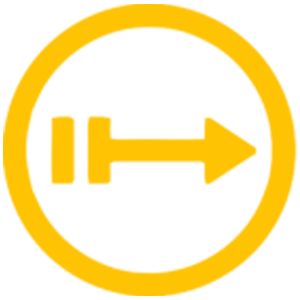Blank Templates for Documentary & Video Production:
- A-Roll Questionnaire for Doc & Video – Blank Template
- Script for Doc & Video – Blank Template
- Shotlist & Schedule for Doc & Video – Blank Template
Select past Etherium Sky projects with reference pre-production paperwork:
(Republic of Molossia Minidoc)
Pre-Production Paperwork:
Key Links:
Pre-Production Paperwork:
Key Links:
Connect with Etherium Sky!
Building Your Doc / Video Script
So you’re in pre-production for your documentary or video project. If you’re reading this, you should already have your Interview Questionnaire finished – if you don’t, I suggest you check out THIS ARTICLE on how to do that first. And from here on, let’s dive right into building your script!
QUICK SUMMARY
The script is the most important document you’ll need to draft in pre-production.
To do that, I open up a word document, create a table and divide it into 3 key columns: story (a-roll), visuals (b-roll) and notes. Some projects need more sections, but those three are key. From here on, you populate your story column with your interview questions and expected answers, all in story order. Once you have your story down, you go through the ‘visuals’ column filling it with all the key b-roll you want to shoot for each story section. Finally – in your notes – you add any extra details, such as rough runtime, any graphics/animations notes, notes on permissions, archival footage and others, depending on particular needs of your project.
If that’s all you need – have a look above for some of my document templates which could make your life easier and I wish you best of luck with your shoot! But if you can spare a few more minutes, stay with me, as I’m about to delve much deeper into the process and share with you plenty of useful tips and tricks!
WHAT’S A DOC SCRIPT LIKE?
Having been trained in narrative film and with most of my experience coming from narrative film sets, I actually struggled years ago when I first started doing client work, which most usually has been documentary and non-fiction. Unlike in narrative film, there is no such thing as a “standard script format” when it comes to documentary, but over the 200 or so such projects I’ve done by now, I’ve developed my own process and my own production documents. Other directors and producers might structure their projects differently, but I’ve found many of my colleagues follow a similar format. In the end, my script needs to work for me – but it also needs to be clear and presentable enough where I clearly convey the story structure to my producers and my crew.
When it comes to documentary – my scripts are more like outlines. This tends to be the same for NGO projects, business promos, essentially any film, tv or video projects where you have A-roll interviews driving your story and your B-roll visuals visually dressing it up.
A-ROLL
In case you’re not familiar with the lingo just yet – A-roll refers to your key story. Most obviously, this tends to be all your interviews, but A-roll could also include things like narration, on-screen title cards or other elements, depending on each project. In case of my mini-doc on Molossia – my A-roll is exclusively my interview with the all powerful president Kevin Baugh.

B-ROLL
B-roll on the other hand – refers to all your materials which dress your story up. This can be visuals you shoot, it can be archival video, it can be photos, graphics or animations. In case of my Molossia story, B-roll is actually most of what you see. The drone shots showing the desert nation, the images of the president with his wife stamping passports and greeting visitors – that’s all B-roll.
So – the voice of the president you hear narrating the story – comes from my A-roll (and I sometimes cut back to that A-roll interview.) Yet for most of the runtime what you’re seeing – are largely my visuals, or B-roll.
This should be pretty clear, at least in my Molossia story, but if you want a bit more of a challenge – have a look at my BBC project about the Ghost Mines of near Arctic Alaska, or check out my NBC mini-doc on the history of Couchsurfing. Those projects are a bit more expansive, so go through them and ask yourself – which parts are my A-roll and which parts are my B-roll?

GOT THAT? LET’S CONTINUE WITH WRITING THE SCRIPT!
To get started, open up my script template, or simply create a word project and in it create a table with 3 key columns. From there let’s first get to work on the…
STORY (A-ROLL) COLUMN
Let’s go through it – and fill it in. To do this, open up your interview questions list, which you should already have ready. If you don’t – I have a video as well as a text article on getting that done.
For the purpose of your script – structure your story in story order. This may not be the same as your interview questions list.
So – where do you want to start? What’s the bit of information you want to open your project with? This will vary greatly, but here are some points of consideration:
WHO IS YOUR TARGET AUDIENCE?
If you’re targeting an audience who has no existing interest in your story – it may be a good idea to hook them with the best you’ve got from the start! In general – this is usually quite important nowadays, with so much film, video and media content available and competing for attention. However if you’re working on a project to be used internally by a company to train their employees – then marketing gimmicks might not carry that much importance.
Consider this: How do your grandma, your co-worker or your 14 year old nephew consume films, video or media content? Would you say they approach it the same way? How would each of them react differently to your project? How could you change your project to make it more appealing to each of them?
WHAT IS THE DISTRIBUTION MEDIUM OF YOUR PROJECT?
What I mean is “where and how will people watch your project”?
If you’re making stuff for social media – guess what, you have some 5 seconds (if that!) – to catch your audience’s attention, both with you’re a-roll and with your b-roll. If you don’t, there’s a very good chance that your viewers won’t even make it past the first minute. However – also consider the opposite. Trying to forcefully hook your audience when the hook simply makes no sense – can turn people away.
But what if you’re displaying your work at a private event or screening? Or at a film festival? In such cases, people generally make the decision to watch your entire project before it starts, allowing you to be more creative in your structure, allowing you more time to get to the core of your story. (Which however should never be an excuse for making a project that simply doesn’t engage its viewers!)
CONSIDER THE PROJECT FORMAT & PRODUCER’S NEEDS
Consider your project format and any needs placed on you by your client, network and/or producers.
Working on a promo for PwC, my client was very specific on needing to both open and close the project with a-roll from their CEO. Sometimes my clients are very specific, other times less so. Generally, however – I am already quite familiar with the overall format followed by my key clients.
Take a look at my Molossia project shot for NBC and compare that with my story on the world’s most expensive cheese made from donkey milk in Serbia, shot for Insider Inc. While both are mini-docs, they follow vastly different structures. My NBC projects in general tend to be personal, informal and down to earth, relatable. All my work with Insider Inc tends to be much more journalistic, more informative, factual.
Every client will have different needs – and I need to be able to adapt to those needs. This starts very much here, in the script.
CONSIDER YOUR OWN CREATIVE & STORYTELLING STYLE
Where do you want to start, where do you want to finish? Do you want the audience to WOW’ed in the first minute, or do you want to create a sense of mystery and pull them in? Do you want to intentionally mislead them, or do you want to clearly state your story purpose from the start?
FINALIZE YOUR STORY COLUMN
Think on some of those topics and using the questions from your a-roll interview list, fill in your story column, start to finish. I tend to break it down into sequences (or “chunks,” “thoughts,” “scenes,” “sections” – whatever you want to call them.
As you’ll see in my sample script – I know that I want to open with a catchy audio bit – something that will quickly establish what this story will be about. This will be my hook.
From there – I want to take a quick “flashback”. I want to explore the origins – I want my subject to talk to me about his own personal background. Having him do so – establishes a stronger connection between the viewer and my speaker for the remainder of the video.
Next section – since we already established where it all began – now let’s show where we are today. This keeps us grounded – and by now I pretty much built the groundwork for this story. We haven’t actually talked about “Molossia” that much yet – but I already hooked the viewer and established the backstory.
So now, we delve into the heart of what Molossia is all about. Since the viewer made it this far, I trust I can slow down a little bit, have a section or two where I more carefully explore the country – its culture, its history, what it’s all about, how it changed over the years and so on.
By this point in the story – my viewers have been listening to my one interviewee for a few minutes now and so I want to make sure I don’t loose my audience. So let’s offer a slightly different perspective. To do that – I put in a section on the visitor experience. Here, instead of just having the president talk about how great his nation is – which is generally a one-sided view – I get to cut away, change not only the perspective but also the tone of my story and for a few moments focus on someone else.
Finally, since this project is just a short mini-doc, I want to close it on a note that leaves my viewer wanting more. And as I’ve already pretty much covered my key topic, I want to focus on the future. It lets my speaker look ahead and it lets my audience know that there is more to this story. And you always DO want your audience to leave wanting just a bit more! To me as a viewer, whether it’s a documentary, narrative or a video project I watch – it’s those that leave me wanting more that I tend to remember most and that I tend to come back to.
One more note on the story column. In my Molossia script, I merely put in my interview questions into each section. Here’s an honest admission – this is a lazy way to do this. For this particular project, I knew my story well enough, it was a very simple shoot, my producer trusted me and gave me a free hand and all this was sufficient. However, usually, I would actually fill each section with not questions – but rather answers which I expect for each of those questions, written out in short paragraphs. If you’d like to see what that looks like, I’m also sharing with you a slightly more in-depth script. That one’s for a story I did for the BBC, filming the secret Keyhole shaped tombs in Japan’s Osaka.
All right! I’ll let you finish up your story column, and once you’re ready, let’s move on to visuals.
Need More Practice?
Watch me complete my own SCRIPT for an upcoming NBC mini-doc about foxes!
VISUALS (B-ROLL) COLUMN
If you’ve done your pre-pro research, if you’ve already talked to your contacts – you should have a decent idea of the locations you’ll be in, the activities you’ll get to film and so on. Based on that and based on your story now clearly written out – you should now go through your visuals column and decide what you want to show for each story “scene” / “section” / “sequence.” (I should really figure out some one way to call them…)
Here are some points of consideration:
THINK OF DIFFERENT ACTIVITIES YOU’LL BE FILMING.
DIVIDE THEM AS MUCH AS POSSIBLE INTO SMALLER SUB-ACTIVITIES,
THEN FIGURE OUT IN WHAT ORDER IT’S BEST TO SHOW THEM
Quick Example – if your activity is “shopping” – your ‘sub-activities’ might be walking through the shopping mall, paying, browsing items, entering and leaving the building.
In case of Molossia, I knew I’d be filming a tour of the country given to visitors by Molossia’s president. This is quite general, but from my pre-interviews, I knew the tour would visit Molossia’s bank, Molossia’s border, their space program and their country jail. I then figured out that I could structure my whole mini-doc to essentially put the viewer in the position of one of those visitors, giving my viewers this tour via my mini-doc. But I didn’t have to do it all at once – instead, I figured that I want to take my viewers to the bank – when in my A-roll we discuss Molossia’s economy. I figured Molossia’s space program could be a fitting image for looking into the future and I figured that any images of the historic monuments could go well with the discussion of the history.
In this way, you can take larger activities you plan to film – and divide them into smaller ones, which you can then organize in a most fitting way, putting each part where you need it.
DO YOU WANT TO REVEAL OR DO YOU WANT TO CONCEAL?
WHEN DO YOU WANT TO DO WHICH?
Do you want to show your audience the place, the activity, the speaker, the topic? If your goal is to educate your viewer, then perhaps that’s precisely what you need to do – clearly show imagery of where you are, who is speaking, what they’re doing. But perhaps your goal is to actually create mystery? Perhaps you want your viewer to wonder what a certain sound might mean, where it might be coming from? Perhaps keeping your speaker concealed for a while would actually draw your viewer in?
Those are not exclusive things and it’s up to you to figure out at which point you want your visuals to tease, where you want to conceal information and where you want to have a great reveal.
This is something that I can get quite excited about. I come from a traditional cinema background and it’s quite crushing when at times I need to do client work that sometimes isn’t particularly creative. But this is where you get to be creative! Even the decision of whether you shoot a wide shot or a close-up – and when you show which, can make a big difference in how your end project is perceived.
For the Molossia story, I was a one-man crew and also only had a single camera set up for my interview. This somewhat limited my options, but I still at least changed my framing between different parts of the interview, based on which answers I wanted to show where within my edit. I had a fair idea where I wanted to show Molossia’s president as all-powerful, in all his benevolent glory, and when I wanted to punch in for a close up and let me viewer form a closer, more personal connection with him. Think about this when deciding on your visuals.
WILL YOU USE OTHER FORMS OF B-ROLL?
IE. ANIMATIONS, GRAPHICS, ARCHIVAL MATERIAL?
On some projects, you might struggle for enough visuals, especially if the story is fairly contained and your runtime is longer. This was a big problem for me on my NBC mini-doc on the Couchsurfing Revolution. The core of that story was a “concept” rather than a person or a location or a thing. And a concept can be really difficult to show. Couchsurfing is a unique service which allowed millions of people to travel the world in a unique way for free, over the last 20 or so years. But my story wasn’t just about travel – it was about the concept of people coming together thanks to this service or business. And i had no footage showing anything business-related nor did i have footage showing the concept. (How do you show a concept?!) Simply dressing it all up with pretty travel video footage – looked wrong and it was boring. And using stock (or my own material) of people coming together – as in meeting, hugging, greeting each other, whatever – I could use that maybe for 10sec before it gets boring and redundant.
To make the project work, I’ve had to source a lot of material from a number of interviewees and I had to find fitting stock material. On top of that, I had to build from scratch animations to tie the whole story together. I still think the project was rather imperfect or rather could’ve been more – but with the time and budget limitations, I’m still proud of all the b-roll I’ve been able to source, create, and creatively weave into my edit.
Your B-roll materials don’t always have to be just extra video you shoot. If there is something, such as a particular activity that you cannot film yourself, because perhaps it’s the wrong season, or your story focuses on a once-in-a-decade event etc. – perhaps your contacts or interviewees might have existing footage they could share with you?
If you can’t source the footage from your contacts – do check out services which offer stock material – though I’ll be honest that I myself only use such footage as a very last resort. It just always looks like stock material. And that’s not what I want when I want my doc to have a personal touch.
Then – what about graphics? What about animations? In a crunch what about using photos, perhaps with some animated motion?
Be creative. You can figure it out.
WHAT IS THE KEY IMAGE FOR EACH STORY CHUNK?
For each section of your story – ask yourself, what is your key image? What is the key visual you want to show right here in this place?
For Molossia, I knew I’d have some 20sec upfront to visually establish the heart of my story. I needed a visual image which would undeniably tell my viewers “this is Republic of Molossia – a sovereign country fully surrounded by the US. As such – my key image needed to be the border. I hadn’t been there before my shoot, so I knew I might need to improvise a bit on the spot – but I knew that I needed to make absolutely sure I capture this central image – the border separating Molossia from the US. Without it – my sequence might end up lacking focus.
This is not black and white science – but finding such key image for each key “beat” or each key “thought” or at least each key “sequence” in your story – it all helps you ensure your end project will contain enough visuals that help you tell your story while keeping your viewers engaged.
So, by now you should have your story column as well as your visuals column all finished! Awesome! We’re almost done!
NOTES COLUMN
I use my final column for general notes. In case of Molossia, all you’ll find in that column are my expected times for each chunk of story. That’s because the project was fairly straightforward and I simply had no need for many notes. Still – the runtime can be important – especially when I’m commissioned to produce a project of a specific length.
You can write out your expected or intended times for each story chunk, which should help you gauge the rough end length of your final project.
Some additional things I add to my notes would be: comments for my producers or collaborators, translation notes if working in foreign languages, schedule reminders – such as needing to film a specific thing at a specific time or production comments – such as needing a permit or a particular contact person present for a particular shot.
My Molossia story was a relatively small mini-doc – but on larger projects, the script can grow exponentially.
And there you have it! Your documentary script should be largely complete! But don’t leave just yet! Here are three bonus tips I think you’ll find very useful!
BONUS TIP #1
THREE ACT STORY STRUCTURE
I come from a traditional narrative film background, but I find that traditional 3-act story structure is absolutely key not only in narrative work but also in documentary as well pretty much any video project you can think of!
Greatly simplifying – every story you tell should have a clear beginning, middle and end. Without it – your project will fall flat. Even something as silly as a 30sec TV commercial for a laundry detergent – is likely to have a beginning, middle and an end. Think about it – they establish a problem – dirty laundry. That’s your beginning. The end – is likely the opposite of the beginning (to force the need for progress!) – the character wants to have clean laundry. And what’s the middle? That’s the detergent they’re selling! (duh!)
If you want to engage your viewers – be absolutely sure your story has a clear beginning, middle and end. Not only in terms of A-roll – but also in terms of B-roll! A story beginning with visuals of a sunrise might reach a point of closure ending with visuals of a sunset. A story starting at the open sea – might end most naturally with a boat pulling into a port. And a story starting with tight close up shots – might end nicely with an open wide shot.
The possibilities here are endless and will greatly depend on your particular story – but the key is always that you want to move from point A to point B to point C. If you’re not doing that, if you’re not progressing – your story is at a standstill. And if it’s standing still – it’s likely boring and you’re likely going to loose viewers.
BONUS TIP #2
HAVE PEOPLE DO STUFF!
I learned this back in film school, in my visual design class dealing with photography and composition. The teacher told us – if you photograph a guy standing on the street – that’s all you got. A guy standing on the street. Not particularly interesting. But have that same guy, in the same place – POINTING – to something – and suddenly you’ve created curiosity in your viewer. What is this person seeing? What are they looking at? What do they want to show us?
The same general rule applies to film, video, TV. This is something I always greatly appreciated living and working in Asia. Overgeneralizing – in Asia, more often then not I didn’t even have to ‘try’ to do this, it often happened on its own!
Let’s take The Last Qeej Makers, my BBC project about the dying Hmong traditional instrument. During my interview, my interviewees were going about their business, having coffee and smoking pipe by the fire. In another interview, for my feature documentary film called Love Market – one of my speakers mid-interview got bored and began breastfeeding her baby while talking to me.
Those were tiny moments when I was able to capture more than just images, more than just interviews – but rather glimpses of every day human life, which were key to each of those two stories.
Sometimes those things happen naturally. Sometimes – you can make them happen! Interviewing Yahya Abdul Mateen II (Aquaman, Matrix 4) for Gym’n’Fridge’ – a project I shot for Men’s Health, for a part of his interview, I made him do pushups. Since the project dealt with fitness and health – doing so brought a lot of energy into the end video.
This of course doesn’t only work for A-Roll! Even more importantly, you should aim for your B-roll to be active. Often times shooting on a quiet street, for example, I’ll hold my shot rolling for 10 minutes, knowing that I will not use more than 2sec of it in my edit at most. Why? I’m probably waiting for a car to drive by, a pedestrian to walk by, a bird to fly past. For something to happen, even if only in the background. This makes my shots feel more alive! And if in every shot you merely see buildings on the street or people sitting around doing nothing in particular – your audience might have a hard time.
BONUS TIP #3
ON EVERY PRODUCTION, YOU’RE REALLY TELLING 3 DIFFERENT STORIES
This is a sort of cliché which every film student has heard numerous times, but it’s still true. On every project, you’re actually telling three different stories. First one – is the story you tell in pre-production. It’s the story in the script you just completed. Second story – will be the one you tell on set, during principal photography (your shoot). And the third story you will tell in your post-production.
This can be somewhat frustrating. It has been to me early on in my career. I used to think it was a result of my own shortcomings, not being able to deliver very much the project I set out to create in my script. But with time I learned that this a natural part of the process and in fact you’re not telling three different stories at all, but rather with each stage of production your story grows and evolves, often resulting in something far greater than you could imagine early on.
Here’s the deal though – your script is what you present to your producer or client before you get to your shoot. Once approved, this is the document that your end project will be judged against. If you provide your client an end product vastly and entirely different than your script – prepare for a difficult discussion. However I can say that until today, even after over 16 years in this industry, this has never once happened to me. What happened plenty of times though – were clients who were impressed with my ability to deliver a product greater than the relatively small premise I’d presented early on.
As long as you’ve been thorough in your research, story development and pre-production, your end story will not be any different than your starting point – but it will merely be grander, richer, more engaging. And every client, every producer and every viewer, seeing such growth, seeing that you deliver not only what you promise – but in fact more – will indeed appreciate it and will seek out more stories from you.
WRAP UP
And that’s it! I hope your story is shaping up well and I hope you found this advice helpful!
Aside from this article, I encourage you to watch my pre-production videos, as they’re more hands-on and go into more detail on the process.
You’re past the halfway point now with your work – but you’re not done quite yet! Before you wrap up your pre-production, you still need to complete your SHOTLIST AND SCHEDULE! And if you haven’t done it yet (going out of order! You rebel!) – also don’t forget your A-ROLL INTERVIEW QUESTIONNAIRE.
But don’t worry, I got you covered. Below you’ll find links to videos and articles where I guide you through all of it by hand, step by step!
See you there!






